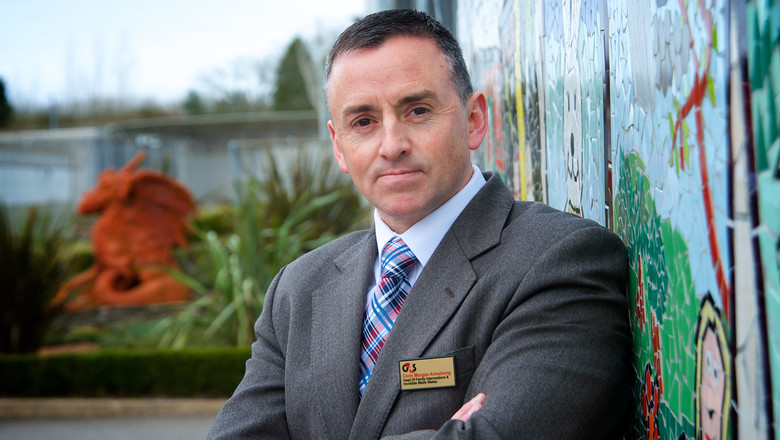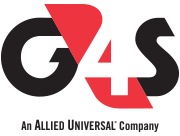
Family focused reform
at HM Prison Parc

Corin Morgan-Armstrong believes this so strongly he decided to do something about it and, in 2012, he devised a project called Invisible Walls.
A December 2017 evaluation of the first five years of the project by the University of South Wales has found that it is already getting significant results, leading to further funding by the HM Prison and Probation Service (HMPPS) and G4S.
“Prisoners who have their children’s name tattooed on their skin might tell you nothing is more important than their family, and yet everything they do runs counter to that. I wanted to connect these men with the emotional and practical hardship they are putting their families through in order to give them a different focus and help them to go down a different path,” says Morgan-Armstrong.
Cut off from family and opportunity, without goals, many prisoners return to crime on release; as many as 50% within a year, according to the Ministry of Justice. Figures due to be released later this year will demonstrate that the G4S scheme is making a significant impact on those numbers, Morgan-Armstrong says.

Supporting prisoners and their families
The HM Prison Parc scheme, which was delivered in partnership with Barnardo’s Cymru, ran for its first five years using Big Lottery funding. Each prisoner taking part in the scheme is allocated a mentor, who also works together with the prisoner’s family – children, partners and grandparents – to help sustain and rebuild connections.
It doesn’t stop there. Within HM Prison Parc’s Family Intervention Unit, prisoners on the scheme have access to 19 different “family interventions”, from parenting-for-dads courses to in-prison parents’ evenings.
“At first, schools were very reluctant even to talk to us. Now we have schools chasing us to join the scheme.” Teachers bring examples of children’s work into the prison to show to the inmates and their families. Certificates and rewards are given to the children and teachers, and even the fathers in jail. “We want children to see their father doing something positive and being applauded,” explains Morgan-Armstrong.
Because it’s not just about rehabilitating the prisoner: “The mentors work with prisoners’ partners, children and their schools, and social services to bring all the threads together. Partners often have issues such as substance misuse, poor emotional coping or poor parenting skills and debt.”
Children of prisoners, too, are often struggling: nearly half the children of prisoners starting the scheme were experiencing attendance or attainment issues; 16% were registered “at risk” by social services; 10% were being bullied.
“Some 65% of boys whose father is in prison will end up in the criminal justice system themselves. If even one of those children is taken into care, the financial implications for the state are at least a few hundred thousand pounds. Through Invisible Walls we’ve seen a jump in school attendance for the cohort to 93%, and bullying dropped to zero. The amount of social services support required for those children has massively reduced.”
Sarah Crawley, Director, Barnardo’s Cymru, adds: “As G4S’s external partners, Barnardo’s Cymru were able to work with prisoners’ wider families, ensuring they were able to link into support networks within their own communities. The families were happy to work with us, as they didn’t see it as stigmatising, and we were able to build important links with schools to help support children at a very difficult time.”
The scheme has transformed the prospects of the men at HM Prison Parc too. On arrival at Parc, 80% of prisoners on the scheme had been unemployed, and 17% homeless; 89% were misusing drugs or alcohol. On leaving, only 25% were unemployed and 1% homeless; 20% were misusing drugs or alcohol. Even prisoner’s families reduced their drug and alcohol misuse from 15% to 5%.

A positive impact
But what about prisoners who aren’t on the scheme? Morgan-Armstrong believes there’s a knock-on effect. “The Ministry of Justice and the Lord Farmer Review (2017) are very clear about the positive effect of regular prison visits in reducing reoffending.
On average, 48% of prisoners receive regular visits. At Parc, we’ve increased that to 69%, and more recently 77%.” He attributes this increase to the family interventions strategy and model that they have developed over the last decade, and simple humanist changes, such as adding colour and plants to the visitor areas to make it a place where children could be comfortable, and which is conducive to positive family engagement.
“People often don’t want to come to visit family members in prison because it’s horrible. It’s dirty, frightening and miserable. We created a very colourful, welcoming, clean visiting facility that is still mindful of security,” he explains.
The positive outcomes Invisible Walls is generating have helped to inform the Farmer Review, commissioned to explore whether such family interventions could help rehabilitate offenders, and the HM Inspectorate of Prison’s Expectations – the criteria prisons must meet.
G4S and HMPPS Wales have funded Invisible Walls to continue, increasing the time mentors spend with offenders post-release from six to 12 months and streamlining the scheme to focus on its most effective interventions.
“We are delighted that this partnership has been recognised in such a positive way and we continue to work with G4S running Parc’s visitor centre, where we provide a welcoming atmosphere for the 400 children who visit each week,” says Crawley.
“We now have a cost-effective approach I’m confident that other prisons could adopt. We have an opportunity to create a family strategy across Wales’ prisons and we’ve had interest in the scheme from prisons around the world. If I could double the team we could double the outcomes – but the new delivery model is leaner and smarter, and that means it can be replicated,” concludes Morgan-Armstrong.
